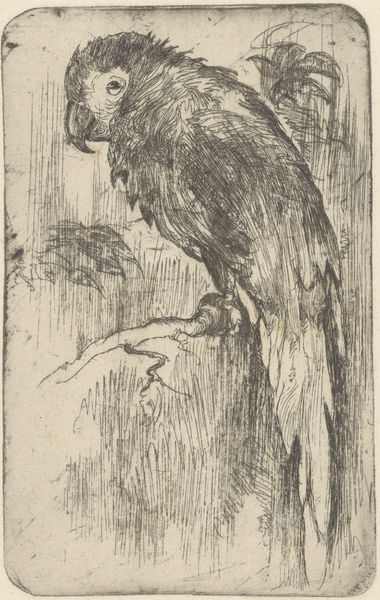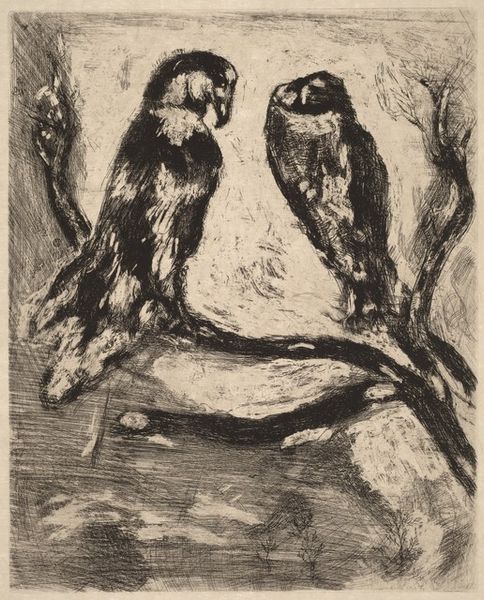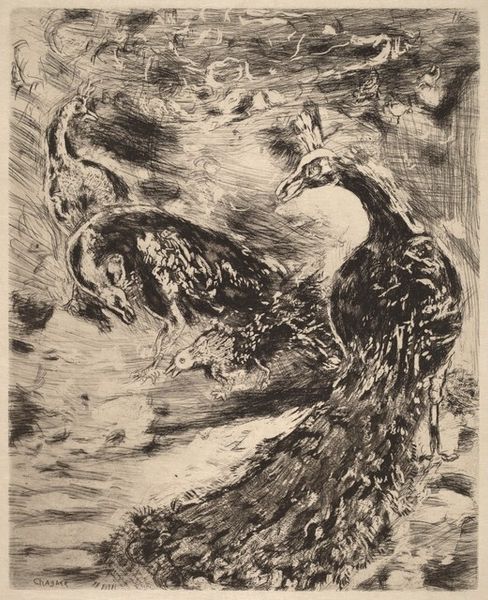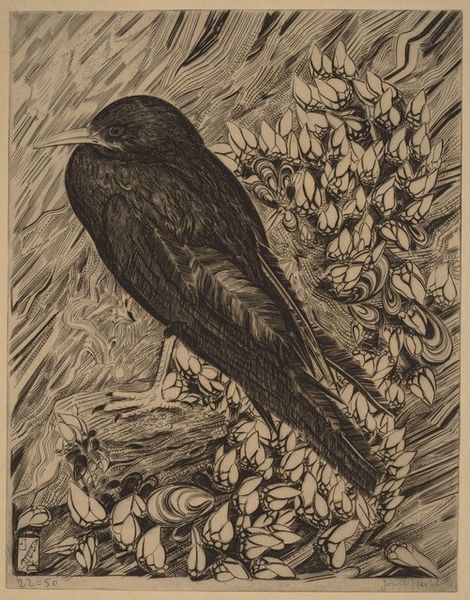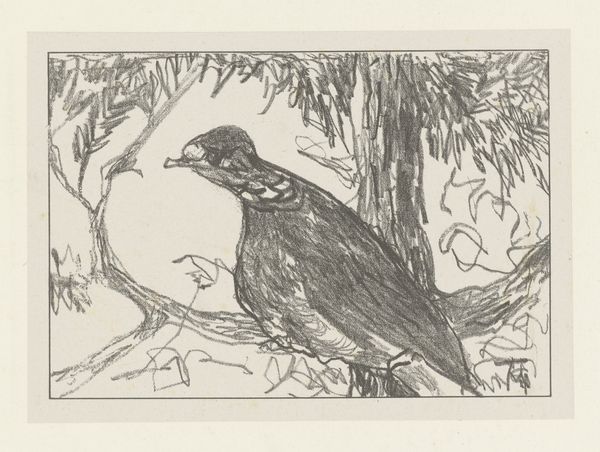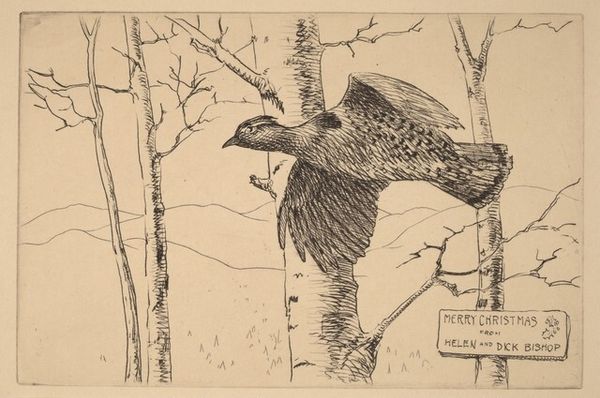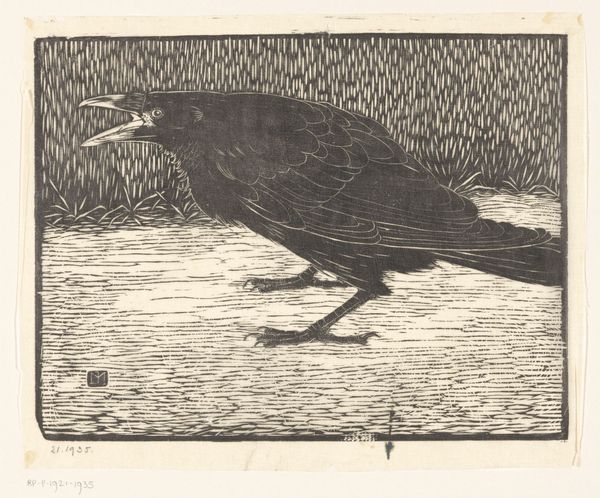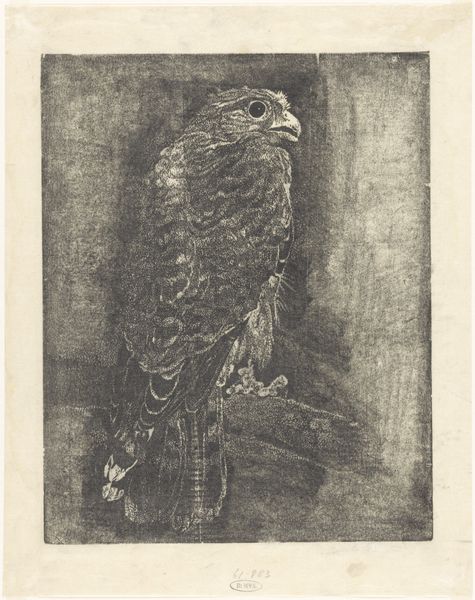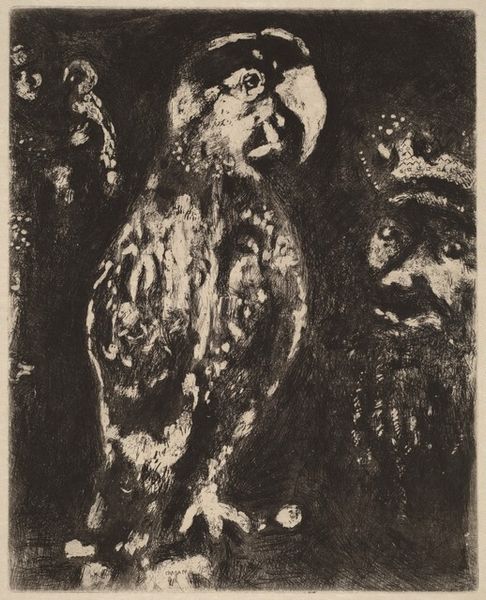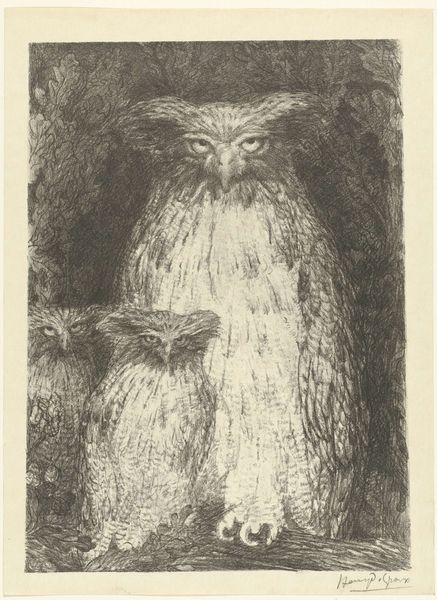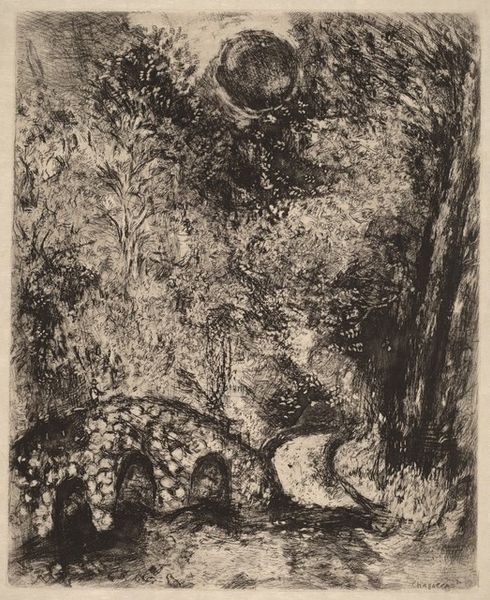
Copyright: National Gallery of Art: CC0 1.0
Editor: Here we have Marc Chagall's etching, "The Raven and the Fox," created sometime between 1927 and 1930. It's fascinating how stark and shadowy it appears, like a half-remembered dream. I’m immediately drawn to the relationship between the two animals, fraught with tension. How do you interpret this work, considering Chagall's use of symbolism? Curator: It's interesting you pick up on that sense of unease. I see this etching as Chagall engaging with cultural memory, specifically through the fable of the raven and the fox. These figures aren't just animals; they're carriers of archetypal roles. The raven, often a symbol of intelligence, is here burdened with vanity, and the fox embodies cunning deception. Editor: So, Chagall's not just illustrating a story, he's tapping into something deeper about human nature? Curator: Precisely. The stark contrast and the almost frantic lines of the etching emphasize the psychological weight of the story. Think about what each creature represents in the collective unconscious. The desire for validation, the willingness to manipulate – are these themes still relevant? What feelings are evoked in you as you consider that this is part of a larger series of etchings related to fables? Editor: It's almost unsettling how modern these timeless failings feel, even depicted in this fairy-tale style. Knowing it's part of a series brings a different context as well. Curator: Exactly. Chagall uses this seemingly simple fable as a mirror, reflecting our own tendencies towards flattery and deceit. The symbolic resonance lingers long after the tale is told. Editor: I'll definitely think about the raven and the fox differently now, recognizing them as these cultural touchstones and seeing their lasting symbolism throughout history! Curator: It's amazing what can be unlocked through an exploration of images and the visual culture that imbues our shared human experience.
Comments
No comments
Be the first to comment and join the conversation on the ultimate creative platform.
